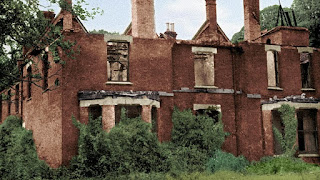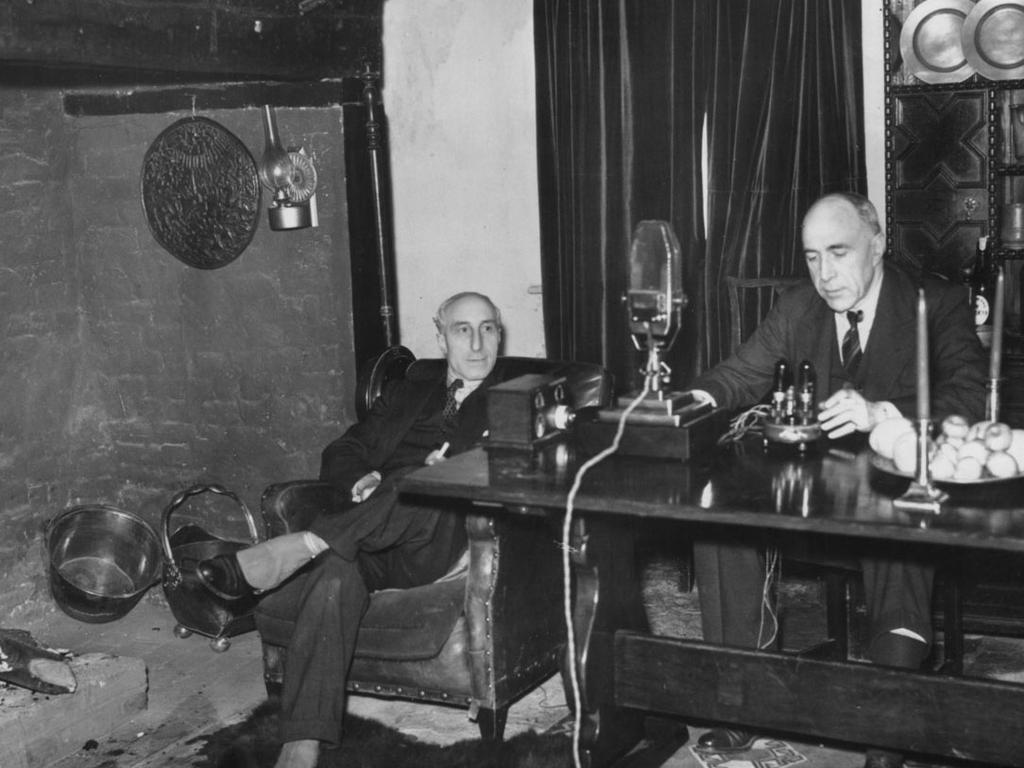 |
| Borley Rectory in Essex, England, after the 1939 fire. |
It's a haunting that continues to happen at the Borley Rectory and how a ghost started a fire that severely burned the structure.
Here's the story:
Fire did not stop ghosts when England’s most haunted house Borley Rectory went up in flames
Source: https://www.dailytelegraph.com.au/journalists/troy-lennon
Troy Lennon, History Editor, The Daily Telegraph February 26, 2019 8:00am
Captain
William Hart Gregson had recently taken possession of the creepy house
in Essex, knowing full well its reputation for spooky, unexplained
events. Although he had renamed it simply “The Priory” most people knew
it as Borley Rectory, the most haunted house in Britain.
Gregson planned to turn the mysterious manse into a tourist attraction. The
strange occurrences at the property continued. Doors left locked were
suddenly found unlocked. A large cover placed over a well in the cellar
was later found tossed aside.
 |
| Borley Rectory in 1892. |
got up to their usual mischief — but with more serious consequences.
While sorting through some books at the house Gregson saw a stack of them fall, despite being firmly placed.
The books knocked over a paraffin lamp, spilling oil across the floor, which then ignited.
Unable
to do anything about the fire, which quickly became too big to control,
the captain phoned the local Sudbury Fire Brigade. By the time the fire
engines arrived the house was well alight. The firemen extinguished the
flames but not before they had destroyed the upper storey and damaged
most rooms on the ground floor.
A
policeman who had attended the fire later questioned Gregson about the
identity of the “lady and gentlemen, in cloaks” he had seen leaving the
house as it was burning. He assured the policeman he was the only person
at the rectory.
It was a spooky end to the infamous house, which had been scaring people since the 19th century.
The
building had even attracted the famed psychic investigator Harry Price,
who had spent a year researching the ghosts of Borley.
But after the fire the building would never be rebuilt.
 |
| Undated photo taken after the fire |
The
first records of hauntings date from the 1860s when servants and locals
reported hearing footsteps and seeing ghostly figures in the grounds.
Bull’s daughters said they often saw a nun walking through the garden.
When they tried to approach she faded away and vanished.
A
legend grew that a monk from a 14th century monastery that once stood
near where the rectory was built fell in love with a nun from a convent
in Bures, 13km away. When they tried to elope they were caught. The
priest and an accomplice who drove the monk’s coach were executed and
the nun bricked up in a cellar.
The
story was later shown to have no basis in history and was most likely
the concoction of Bull who liked to tell his children ghost stories. But
the stories inspired people to report seeing headless priests and
coachmen as well as a wandering nun. A particular path through the
garden became known by locals as “the Nun’s Walk”.
 |
| Ghost hunter Harry Price (at desk) with unidentified man about to conduct a seance, circa 1940 |
When a new rector, Guy Smith, moved to the
house in 1928 he found a package in a cupboard containing a small
female skull. No explanation of where it came from was ever found. Smith
and his wife also reported hearing strange noises and seeing ghosts.
The Smiths got in touch with a newspaper which contacted the Society for
Psychical Research (SPR) who sent Harry Price. Once a magician who
specialised in uncovering fraudsters, Price had taken to endorsing
psychics he believed were genuine. He had also become one England’s
pre-eminent ghost hunters.
Price first
visited the house in 1929. He was unable to do anything about the ghosts
and the Smiths moved out. It was a year before Reverend Lionel Algernon
Foyster was found as a replacement for Smith. Foyster was also troubled
by ghosts and left in 1937.
Price
had become fascinated by the house and continued visiting during
Foyster’s time there. When Foyster left he rented the house for a year
to conduct research. He later wrote a book about the property, but many
of his findings are thought to have been fabricated.
Gregson
had hoped to capitalise on the fame brought to the house by Price when
it burnt to the ground in 1939. It was demolished in 1944 but people
continued to report seeing ghosts.

No comments:
Post a Comment